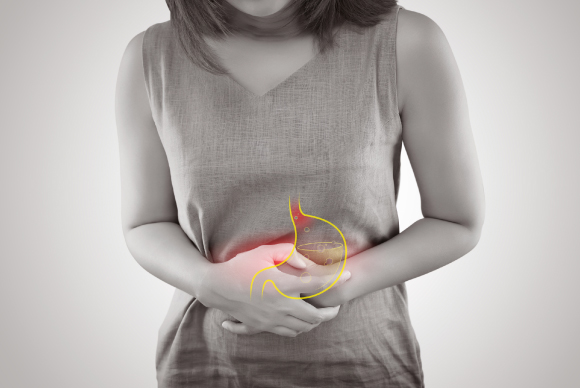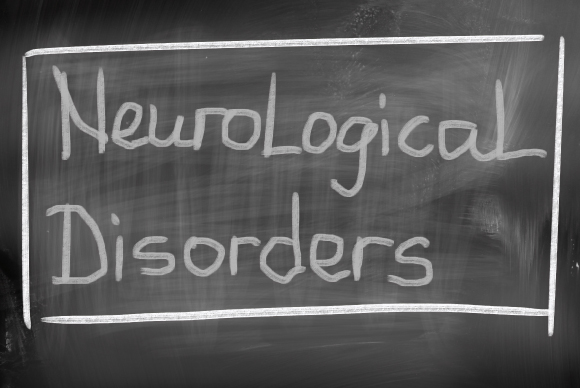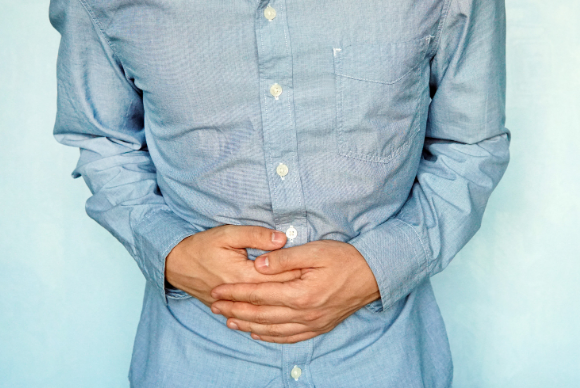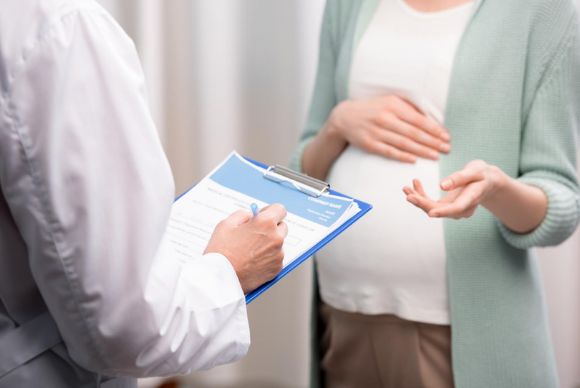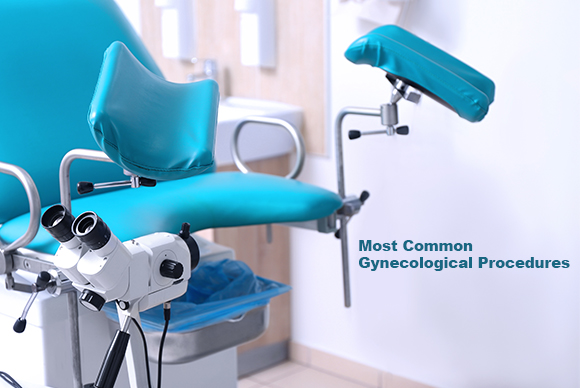GERD – A Brief Introduction
You surely must have felt acidity burps from time to time. It happens due to the backflow of the stomach acid into the digestive tract. It is not uncommon for people to experience, once in a while as it is quite natural and needs no treatment to resolve it. But when it becomes chronic, it’s medically termed as GERD. It an acronym for gastroesophageal reflux disease. It is crucial to seek treatment for the same form an expert gastroenterologist on time to mitigate the risk of having any complications arising from it. Let’s have a look at it, in brief.
What is GERD?
It is a digestive disease that affects the muscle of the lower portion of the esophagus that leads towards the stomach. Under normal condition, the Lowest Esophageal Sphincter (LES) connects the esophagus to the stomach and passes the food forwards. In the case of GERD, this LES is either very weak or function abnormally, causing the backflow.
It pushes the contents of the stomach towards the upper esophagus. It can lead to persistent heartburn and acid indigestion, if left untreated.
What are the Symptoms of GERD?
The particular symptoms might vary from person to person, but some of the most common symptoms are as follows-
- Heartburn, that is the presence of burning sensation in the chest (which might worsen at night or after meals)
- Difficulty swallowing, even if you are intaking easily palatable food
- Chest pain, which is otherwise unexplainable
- Chronic cough or presence of cough at the back of the mouth,
- Regurgitation of sour liquid in the mouth
- The sensation of a lump in the throat
- On setting of asthma, or worsening of asthma
- Disrupted sleep cycle, persistently
Presence of 3 or more of these symptoms should be checked by gastroenterologist to see if it is due to GERD.
Risk Factors of GERD
Though anyone gets diagnosed with GERD, there are certain risk factors associated with it. Risk factors are any aspect that enhances the chances of any disease. Some of the most common risk factors for GERD are as follows.
- Weakened lower esophageal sphincter
- Obesity or prolonged overweight
- Pregnancy
- Hiatal hernia (a bulge protruding from the stomach into diaphragm)
- Routinely staying hungry for long
There are certainly other factors that aggravate the GRED. These include
- Chain smoking, particularly over a longer period
- Eating much larger meals (which leads to more secretion of digestive enzymes)
- Eating very late at night
- Persistently taking certain medications like aspirin
- Drinking certain beverages, like alcohol, coffee or other caffeine-loaded drinks
- Eating a certain kind of food, like highly processed, or fried food.
If you have 3 or more of the above-mentioned risk factors, you should watch out for the symptoms, in case they ever happen.
What is the best Treatment for GERD?
The everyday discomfort of GERD can be managed effectively with over the counter drugs and lifestyle change. However, in case hiatal hernia is the reason for the GERD, hernia surgery is needed to resolve the hernia, which also helps to resolve GERD.
5 Most Common Neurological Disorders You Should Know
Neurological diseases are disorders of the central and peripheral nervous system. It includes the organs, namely, the brain, spinal cord, and autonomic nervous system, along with cranial and peripheral nerves. It can also include nerve roots, neuromuscular junction, and muscles in these regions. It requires extensive diagnosis and treatment from specialist neurologists.
Neurological disorders include a wide range of illness such as Epilepsy, Severe Headache, Parkinson’s Disease, Spinal Cord Tumor, Brain Tumors, Memory Disorders, Multiple Sclerosis, Stroke and many more.
Today, let’s list a few of them in details.
1. Dementia and Alzheimer’s
It is the condition in which the person loses the ability to think or recollect things on a regular basis. It imparts the memory and often can be seen as an inevitable process of old age. It also includes symptoms like language difficulties and change in behavior. This can lead to agitation, delusions, aggression that may also lead to emotional outbursts. In severe cases, the person might need help even for day to day activities like bathing and eating, etc.
2. Parkinson’s Disease
It is a group of disorders that affect the motor senses in the body. It projects symptoms like trembling of body parts like hands, legs, arms, face, and jaw. It can also lead to stiffness of limbs and posture instability, imbalance and lack of coordination while making movements. Parkinson’s Disease can onset after the age of 50, but it might happen to people even before that, depending upon case to case. Unfortunately, it is not possible to treat them completely, but it can be managed effectively with proper medicines and support.
3. Epilepsy
This is yet another type of neurological disorder that is caused by abnormally high electrical impulse into the brain. As a result, the body starts to have seizures. Seizures can be characterized by involuntary and abnormal, vibration-like movement of the body. The magnitude of such seizure can vary from minor, mild to major, thus the range of its treatment varies as well. It requires proper training of the family members for minor episodes, along with the promptness to avail treatment.
4. Stroke
Stroke is a severe condition that occurs when the blood vessels supplying oxygenated blood to the brain, bursts or gets clogged in between. As the brain gets starved of the oxygen and nutrients, it can undergo some severe damage and thus considered as a medical emergency and need intensive care at the earliest. Even after the critical hours as passed, it is crucial to undergo follow up to evaluate the cause of stroke and ensure a full recovery.
5. Multiple Sclerosis
This neurological disease counts as an autoimmune disease which damages the outer layer of the nerve cells. While this outer, protective layer gets damaged, it leads to nerve impairment and in turn, leads to several other diseases. Its treatment options include medicines to suppress the immune system and manage the symptom.
For these and more neurological condition, seek appointment from our neurologists at ILS Hospitals on time.
4 Common Gastrointestinal Diseases That You Should Be Aware Of
We all come across articles with catchy titles like ‘best food for weight loss’, ‘worst food during pregnancy’, and so on, isn’t it! Indeed the food we eat determines many health factors for us. However, sometimes the passage of food, the digestive tract, itself gets inflicted with many diseases. In fact, the number of gastrointestinal conditions is on a rise since the past few decades. Let’s take a look at some of the most common ones of them.
Gastrointestinal conditions are the diseases that originate in any or more of the organs of the GI tract and its accessory organs. It includes the esophagus, stomach, gallbladder, liver, pancreas small and large intestine, colon and rectum. A good Gastroenterologist can offer extensive treatment of the same.
Some of the most common GI conditions are as follows.
1. GERD (Gastroesophageal reflux disease)
Acidity, reflux and heartburn are some most commonly experienced symptoms related to digestion. GERD is the severe form of such acid reflux. It is characteristic by regular acid reflux, often with a sour or bitter taste in the mouth. GERD might be a result of underlying hiatal hernia (for which hernia treatment must be sought immediately) and moreover, untreated GERD can severely harm the esophagus, so it is advised to address it on time.
2. Gallstones
Gallstones is yet another most common GI condition. Gallstones are solidified, crystalline substance that occurs inside the gallbladder. Its size may vary from small granular to big golf ball sized. It causes tremendous pain and can be eased with medicines. However, it is crucial to note that gallstones are mostly impossible to cure with medicine, and it can only be treated permanently with gallstone operation.
3. Gastroenteritis
This is a pathogen infection of the GI tract, which can include, bacteria, virus and parasites. It brings multiple symptoms at once, such as vomiting, diarrhea, headache and also fever. Usually, it is known as common stomach flu. The mild flu can be managed easily with adequate rest, plenty of water and minerals and mild over-the-counter drugs. But it might need some medical treatment, if the symptoms persist for long, or if it triggers again and again. However, these are easily spread and measures should be taken to avoid the possibility.
4. Peptic Ulcers
Unhealthy diet, lifestyle and excessive use of certain medicines can deteriorate the inner membrane of the stomach and expose it to the digestive acids. This results in ulcers and causes several digestive complications, if left unresolved. It often cannot resolve on its own, as the ulcers stay exposed to the enzymes persistently. Thus, its timely treatment is quite important and so is making certain changes in the diet and lifestyle.
There are several other GI conditions as well which need to be treated effectively. At ILS Hospitals, we offer extensive diagnosis treatment for a wide range of GI conditions.
A Brief Introduction About Cervical Cancer Vaccination
Cervical cancer is the second most common form of cancer in women in India, after breast cancer. Cervical cancer refers to the malignancy found in the cervix (the lowermost portion of the uterus) of the reproduction system in women. Though cervical cancer affects older women of age 50 or above the most, many gynecologists confirm that women with the same have been diagnosed in their early 30s as well. Let’s understand regarding many of its aspects in details along with cervical cancer vaccination.
Cervical cancer might project no symptoms at first, but the advanced stages often show some symptoms such as vaginal discharge with blood or strong smell, bleeding in postmenopausal women or during times other than on periods, pelvic pain and so on. Though these symptoms might indicate some mild infections as well, it is always wise to get it checked to rule out the possibility of cervical cancer.
Cervical cancer occurs due to Human Papillomavirus Infection (HPI). It can be prevented effectively with the HPV vaccine. It usually takes 2 to 3 shots to complete the dosage. It is usually advised for young girls of age group 9-15, but can also be recommended to women reaching until the age of 25 or even more. A thorough consultation is advised to consider the same with an expert gynecologist, in depth.
Cervical cancer vaccination is not fully effective for women above the age of 25, particularly if they are already sexually active (It is true for even the younger girls). The reason being, the vaccination loses its effectiveness as women grow older, and moreover being engaged in sex, might already have exposed them to the infection, makes will make the vaccine considerably. However, the HPV vaccine can help prevent many other diseases of the reproductive tract as well.
Cervical cancer vaccination offers protection malignancy in the cervical region. But as HPV virus also can cause cancer in the vulva and vagina, this vaccination protects the women against these as well along with genital warts.
However, there are other measures that can help with early detection of cervical cancer too. Pap smear is a screening that collects sample cells from the cervical cavity. It is then evaluated under a microscope. In case they exhibit any changes in their structure, it might be indicating cancer and thus, timely treatment options can be availed for it.
HPV vaccination is effective and safe. The only side effects that have been found in some cases are pain, swelling, and redness in the site of the injection. However, these are mild and temporary and overall, its advantages surpass the mild discomfort.
ILS Hospitals offers HPV vaccination to fight cervical cancer effectively. We urge parents of every young girl to seek consultation with an experienced gynecologist to consider HPV vaccination for their daughters to have a cervical cancer-free life ahead. For women who are older are also advised to take proper measure to mitigate the possibility of cervical cancer in their future.
How Pregnancy Makes Hernia A Likely Possibility In The Future
Pregnancy is joyous news for every parent-to-be. However, it might bring several complications, either during pregnancy or after childbirth. Being in touch with best maternity hospitals will ensure that you can deal with these complications, effectively. However, some complications such as hernia can surface at any point in time, during or even after pregnancy period. Before understanding their connection, let’s understand what a hernia is.
What Is A Hernia?
A hernia is a medical condition in which a portion of the intestine or internal tissue pushes through the outer membrane. This can happen to any individual, however, there are many risks facts that makes its occurrence more likely. These risk factors include previous surgery or injury, previous hernia, pregnancy, obesity, and many others. Though hernia is not life-threatening in its early stages, it can lead to a severe complication, if it is left untreated for long.
How Pregnancy And Hernia Are Related
A hernia can lead to extra pressure built up in the abdomen, which is inevitable during pregnancy. Thus, there is always some chances of developing hernia for women during pregnancy. The protruded belly button during pregnancy mostly resolves after childbirth. However, many a time, it stills stays protruded as a warning sign of a hernia in the near future.
Though even a single pregnancy is a risk factor of hernia, the chances increase with multiple babies, as twins, triplet or more will, obviously exert more abdominal pressure. Moreover, having multiple pregnancies uplift the chances of hernia, particularity if the previous baby was born with the help of cesarean delivery.
Many a time, a hernia can bulge during labor as well. It is particularly true for a natural birth, as the pregnant women need to exert Herculean amount of pressure to deliver the baby. This push can also prompt a hernia simultaneously or pretty soon enough.
When Can Hernia Occur, After Pregnancy?
Sometime a hernia can appear soon after birth, or even during pregnancy. But is might onset after quite some time after childbirth. Sometimes, the hernia is a result of secondary factors such as long-term weight gain after pregnancy as well. Nevertheless, the risks of having hernia are associated with previous childbirth.
What Should Be Done?
Though neither every pregnancy leads to hernia nor every hernia occurs due to pregnancy, they are sometimes interrelated. This is why every woman who gave birth in the past should be aware of even the minute changes in their body. A visible lump should be treated as a hernia. A thorough, physical examination is often adequate to determine its nature.
Hernia treatment usually comprises of hernia repair surgery itself. This surgical procedure pushes the protrusion back in the cavity and stitches the site close. In some cases, if the opening is quite big, the surgeon uses a surgical mesh to mitigate the possibility of hernia in the future.
ILS Hospitals offers quality hernia treatment to resolve it permanently for good. For more information, visit us today!
Menopause and Peri Menopause – A Brief Introduction
Menopause is the natural cessation of the menstrual cycle in women. It marks the termination of reproductive age. The ovaries are reproductive glands which store eggs and release them one by one each month through the fallopian tube. It also releases the female hormones estrogen and progesterone. Altogether it controls the menstrual cycle and ovulation cycle, both contributing towards natural conception. Gynecologist defines menopause as the phase when the ovaries stop producing the same.
Read more – Hormonal Issues Faced By Women After Menopause
In general, it occurs in the late 40s to early 50s and gives an indication for a few months (sometimes even years) before it. However, it can also happen promptly due to surgical removal of ovaries or uterus or due to any illness. Peri-menopause, on the other hand, is the natural phase that begins 3-4 years before the menopause, but in many cases, it can onset even from the 30s. Women can still conceive and give birth successful while being in peri-menopause.
Several women experience some mild to severe discomfort and annoying symptoms during peri-menopause and menopause.
- A sudden, brief sensation of warmth all over the body, more commonly known as hot flashes
- Vaginal dryness and discomfort during sex
- More frequent urination or the urge to do so
- Persistent insomnia or interrupting sleep cycles
- Mood swings, that might also include periodic or unpredictable depression
- Temporary memory lapse, difficulty in concentration
- Night sweats or sudden cold flash
- Much heavier or lighter, or irregular periods
- Breast tenderness or change in size
- Change in Premenstrual syndrome
- Weight gain along with pain in joints and muscle
- Losing interest in intimacy
- Hair loss
These systems are the indication of ovaries producing less estrogen. In case any women encounter 3 or more of these symptoms for about 3-4 months and is in her late years of childbearing age (or even during), they are highly recommended to seek a gynecologist for a detailed investigation.
Menopause is NOT a disease and cannot be avoided. It is a natural, obvious phase that will onset and eventually be over. Peer to peer talk is quite helpful for most women and so is having awareness related to the changes during menopause. However, menopause comes as a hard time for many women. It is crucial to seek treatment in case the symptoms bother. At ILS Hospitals, our expert gynecologists offer extensive treatment, help, and guidance for women going through the phases of menopause.
What Is Painless Delivery And How It Is Carried Out
The wonderful journey of motherhood begins with pregnancy and childbirth is a crucial event in it. Babies are coming into the earth since the dawn of humankind, sometimes with little to no assistance, all through natural birth. Gradually came the technique of cesarean birth, which offered some advantages for complicated birth. Nowadays, ‘painless delivery’ is being offered by many advanced obstetrician and maternity hospitals. Let’s understand what painless delivery is and how it is carried out.
The labor phase is a painful and traumatic experience for many mothers. The birthing method is a crucial factor for the same, but it also depends on the pain tolerance level of the mother and overall conditions. But thankfully, the expert obstetricians and medical science can help ease the pain these days, with the help of ‘painless delivery.’
What Is Painless Delivery?
Painless delivery is sort of a ‘nickname’ for a natural birth with the administration of a special drug called epidural. Epidural reduces pain significantly in a specific area. In case of labor, it is administrated right in the spine, cause a somewhat numbness in the lower part of the body. With epidural in your system, you are still awake and feel the contraction and can push your baby.
It is induced for natural birth as per the will of the mother or as necessity felt by the doctor. It is also administrated in case of carrying out a C-section. Even though some minor risks such as back pain, fever, and headaches are associated with the epidural, they are extremely rare and poses no long term complications.
Is Painless Delivery totally Painless?
Well, definitely not. While you are welcoming your little baby in the world, it is inevitable to feel some pain. With no epidural, the magnitude of this pain is tremendously high for many mothers. This magnitude can be significantly reduced with the administration of the epidural. With less severe labor pain, you can concentrate more on giving birth and make it a comfortable experience altogether.
Should You Consider Getting A Painless Delivery?
There is no definite yes or no answer for the same. You, along with your partner and obstetrician need to discuss all the possibilities of birth. However, in case you have a low tolerance for pain or becoming a mother for the first time, you should definitely be aware of the same and consider it as one of the options.
Most Common Gynecological Procedures
Gynecological conditions are quite common and thankfully the modern medical science can address most of them effectively. While some can be treated effectively with topical medication, some can be evaluated through non-invasive techniques, but for other condition, it becomes inevitable to use invasive techniques. Most of these procedures (both invasive and non-invasive) are carried out by expert gynecologists and obstetricians in maternity clinic and hospitals.
Here we list out some common gynecological procedures.
Dilation And Curettage
More commonly known as D & C, it is a procedure in which the doctor dilates the cervical cavity in order to remove the lining of the uterus through curettage and extract it out of the cavity through suction. It is used to diagnose any polyps or abnormal growth in the cervical cavity and it is also done to terminate any molar pregnancy and remove the fetal tissues completely after a miscarriage.
Pap Smear
This gynecological procedure should ideally be availed by every woman after the childbearing age and onwards. This procedure including extracting some tissues from the cervix using a speculum. Going for routine Pap smear can help with early detection of any malignancy in the cervix.
Breast Ultrasound
Even though breast cancer is quite common, having lumps in the breast tissue is quite common as well. Whether or not it has malignant growth, can be evaluated by ultrasonography in its original stages. A tumor that keeps growing along with warning signs like nipple discharge and pain, should be diagnosed further.
Hysteroscopy And Hysterectomy
Hysteroscopy is a non-invasive diagnostic procedure to evaluate the presence of any uterine condition. It can also offer useful insights like locating an IUD, abnormal tissue growth, evaluate reasons for repeated miscarriages.
Hysterectomy is the surgical procedure to remove the uterus if it is needed to ensure better health of the patient. Though is sound scary, it is becoming quite common these days and as per gynecologists, they are safe as well if availed form a quality healthcare provider.
Cervical Cryosurgery
Polyps and tumors in the cervix are quite common these days. Cervical cryosurgery is done for removing the tumors that do not resolve on its own. This procedure uses the cryogenic technique to freeze a section of the cervix and remove pre-cancerous cells from the lining of the cervix.
In case you need to undergo any such gynecological procedure or looking for an expert opinion to consider the same, get in touch with our highly experienced gynecologist and obstetrician at ILS Hospitals.
Super Tips To Keep Your Kidney Healthy
Kidneys are a pair of organs that filter the blood and removes any waste and toxins from the body. However, as even ‘one healthy kidney’ can function pretty well, detection of kidney disease becomes quite tricky. Here we bring some super tips, as per nephrologists, to keep your kidney healthy and disease-free.
1. Drink Plenty Of Water
Staying hydrated is always beneficial for everyone. This is particularity true to keep the kidneys healthy and active. So, try to include at least 1.5 to 2 liters of water each day. It helps the urinary system to remove toxins from the body as well reduce the chances of developing kidney stones and other common complications of kidneys.
2. Keep Diabetes In Leash
Diabetes and kidney complications are associated with one another. Thus, it is crucial to keep your diabetes in leash in order to minimize the risks of kidney illnesses in the future.
3. Keep Body Weight In Check
Being overweight brings many complications along with it. Kidney complication is simply one of them. So, staying in shape is a wise way to keep kidney complications at bay. Maintain a healthy body weight by doing physical exercise regularly.
4. Eat Healthy and Wisely
Eating a healthy diet is highly helpful for a healthy kidney. Reduce your salt intake and highly processed food. Instead, include fresh fruits and vegetables. Moreover, in case you are dealing with any kind of discomfort regarding kidney stone or gallstones, it is best to avoid the seeds of the veggies and fruits as much as possible.
5. Monitor Your Blood Pressure Profile
The normal blood pressure ranges from 120 to 80 mmHg. A persistently high blood pressure brings many challenges to kidney’s overall health and functionality. Keeping a tab on your blood pressure level is crucial from time to time.
6. Quit Smoking
Smoking does no good for overall health. Smoking hampers the blood flow to the kidney. Needless to say, when the kidney does not get an adequate blood supply, it affects their ability to function properly. Stop smoking reduces the chances of kidney cancer by about 50 percent.
You are also requested to avail the renal checkup to ensure complete care of your kidneys. Renal checkup packages are available at ILS Hospitals. You are particularity recommended towards the same, in case you have diabetes, obesity, hypertension, or have an immediate family member who also has any kidney complication.
4 Types Of Hearing Loss In Brief
‘We have 2 ears and 1 mouth, that is why we should hear twice as much as we speak’.
It is often said by elders to the youngsters demonstrating the value of listening before acting regarding anything. Indeed it is crucial to have a sound hearing to understand everything around us. It is often mistakenly assumed that hearing loss occurs only for much older people or those who suffer any kind of injury directly over their ears or those who love to listen to loud music over earphone for long hours. However, there are several types of hearing loss. Let’s study them in brief.
1. Conductive Hearing Loss
This type of hearing loss arises due to some damage or blockage in the outer or middle ear. In this case, the sound signal does not pass from the ear canal to the eardrum or from eardrum to the inner ear. It can either be due to clogged earwax, built up fluid of ear glue, persistent infection, abnormal ear bone growth, a perforated eardrum or severe allergies.
It is most common among young children and can be easily treated with over the counter drugs, ear drops or simple ear cleaning procedures.
2. Sensorineural Hearing Loss
This type of hearing loss arises due to the malfunction or damage in the cells of cochlear. It requires immediate and extensive treatment as an unresolved condition can lead to permanent hearing loss. Often it requires assisting implants to control the situation.
3. Mixed Hearing Loss
This type of hearing loss is triggered by the presence of the previous two causes together. Out of these, often the sensorineural hearing loss is permanent and the conductive hearing loss is either temporary or permanent.
4. Auditory Neuropathy Hearing Loss
This type of hearing loss arises from a damaged or malfunctioning auditory nerve transmission between the cochlear and the brain. It triggers due to the cut off the oxygen supply, or some other neurological issue. The degree of hearing loss can fluctuate anywhere between normal to a profound and distinguishing speech from background noise is particularly challenging for such people.
Usually, the mild or temporary hearing loss can be effectively corrected with mild medication. However, several hearing implants and bone anchored hearing aids are also used on patients with high severity or total hearing loss. At ILS Hospitals, our ENT specialists offer advanced forms of audial assisted technique including cochlear implants and other forms of extensive treatment.











